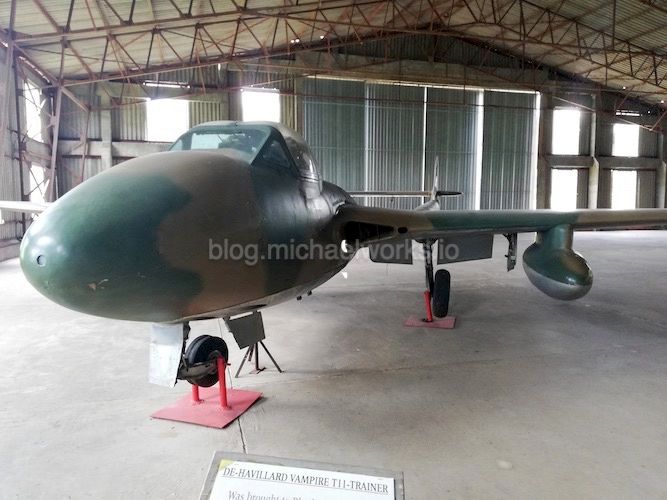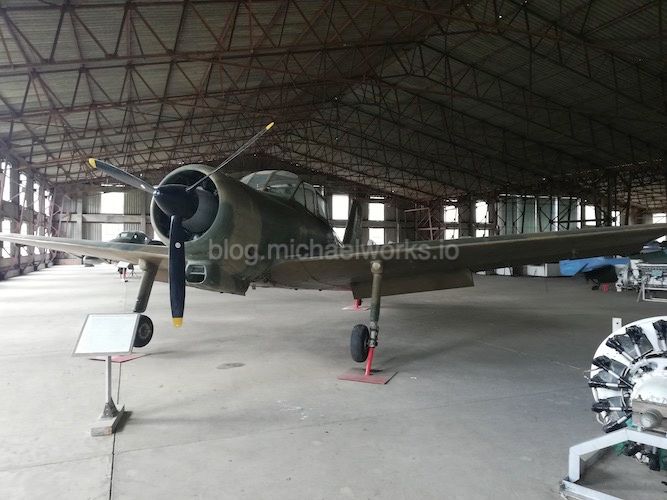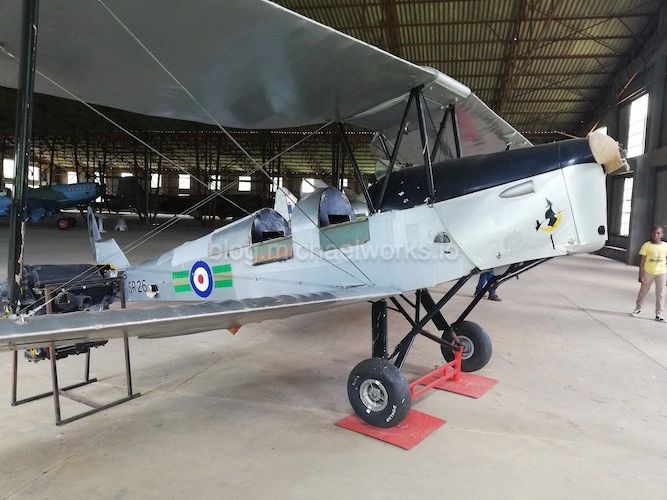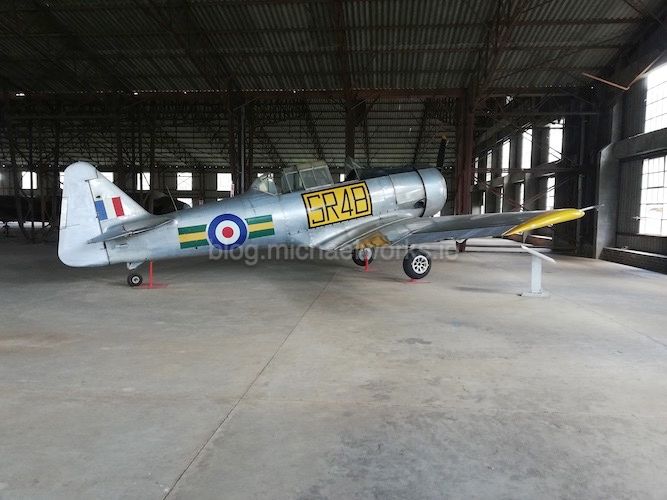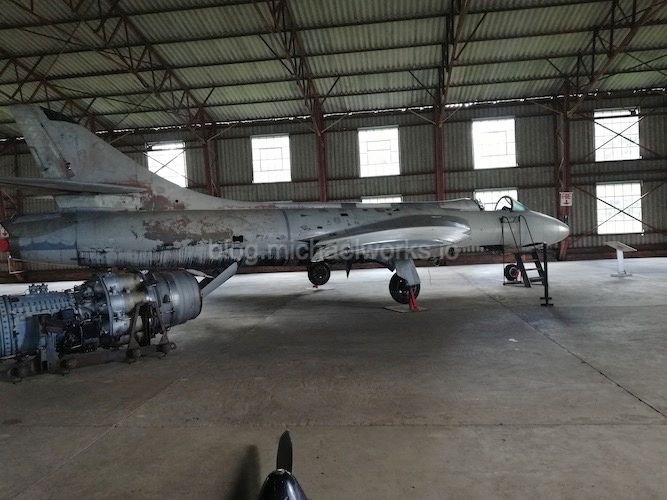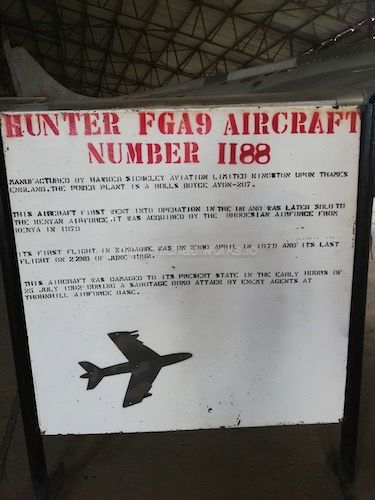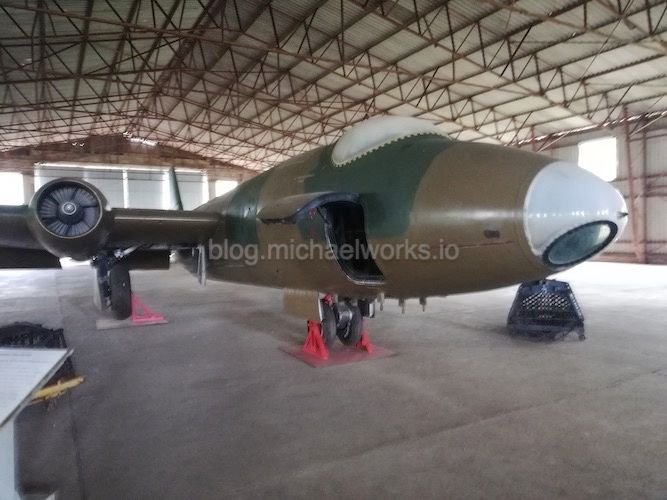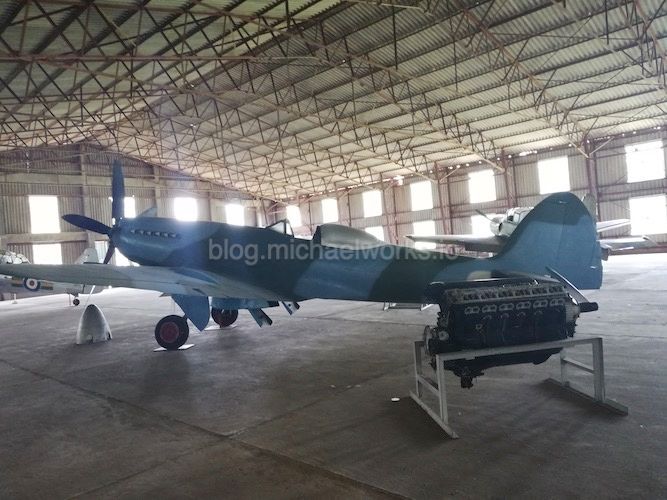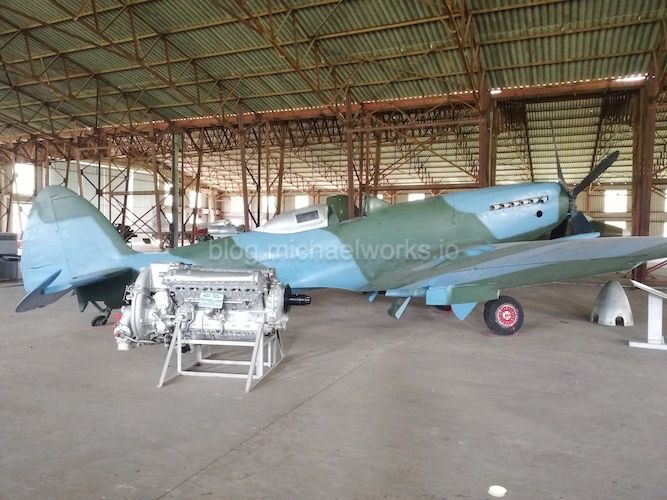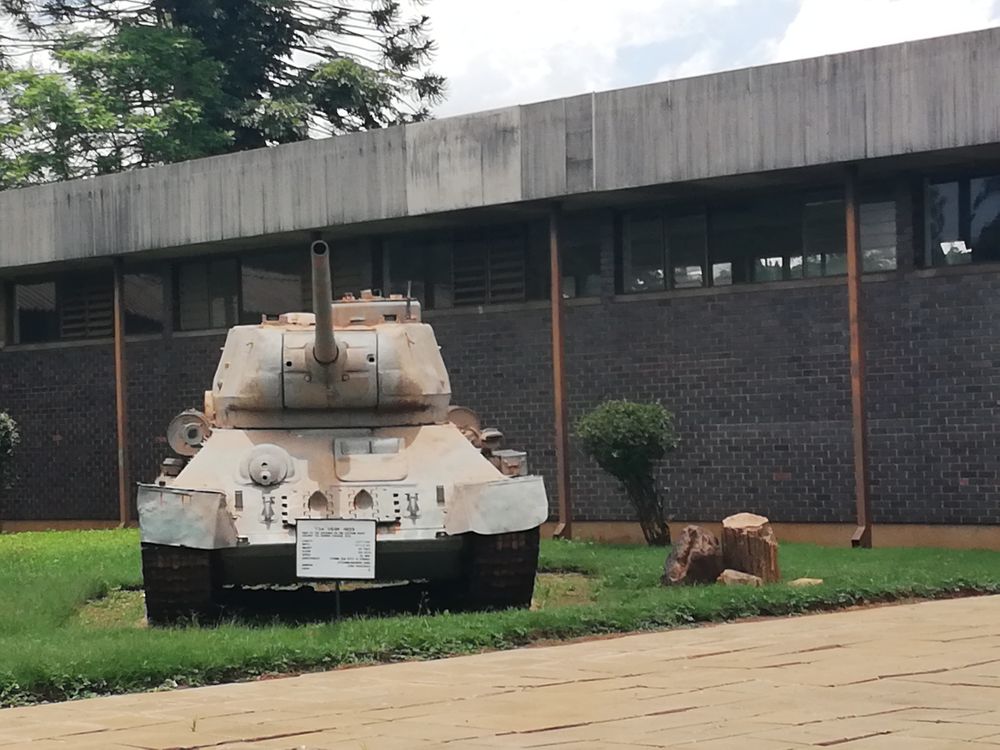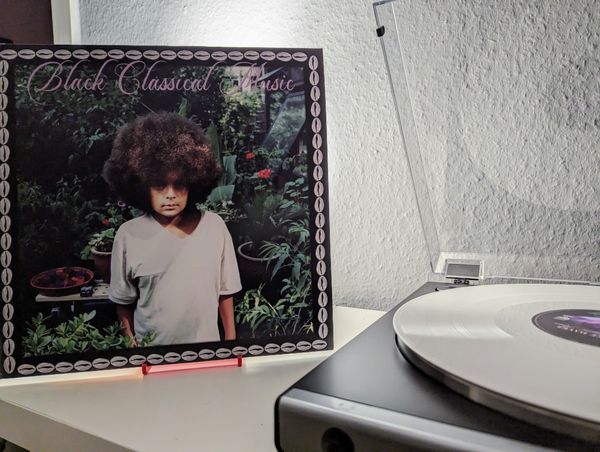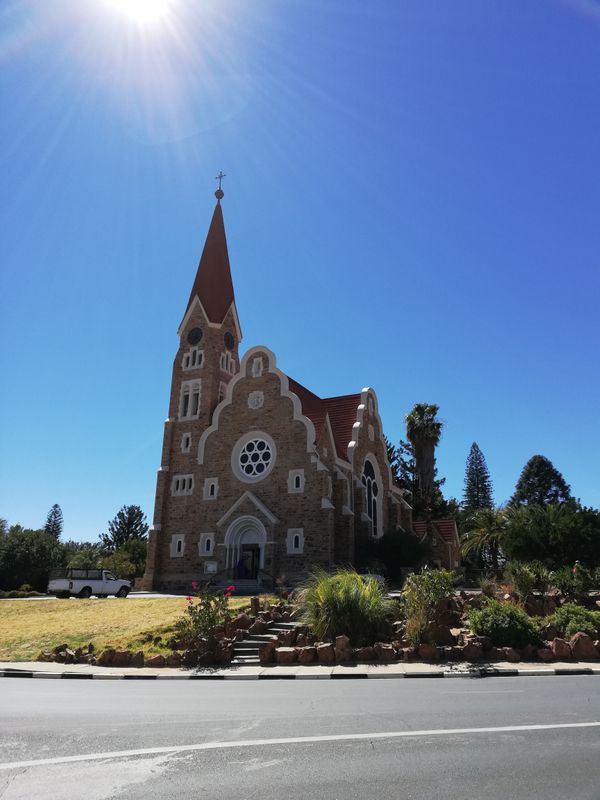A day at a military and aviation museum
Out of all the museums and monuments in Zimbabwe, the one in Gweru, Zimbabwe Military museum is my favorite. It is dedicated to showcasing facets of Zimbabwe’s aviation, military and law enforcement history. However, it is unfortunate that it only showcases military history from the 1890's during the occupation war (1st Chimurenga). This ultimately leaves a lot of speculation regarding exploits of the different ethnic groups that were resident in present day Zimbabwe in the past.
Despite this, the museum contains some interesting artifacts spread inside it's seven 'Galleries'. Each of these galleries carries artifacts detailing different periods and events in the country's aviation and military history. I recently took a trip there and am making this post to provide some insight on what to expect if you decide to stop by the museum.
GALLERY 1
The 1st gallery presents artifacts detailing some of the major conflicts in which indigenous Zimbabweans have participated. There are panels providing information on the 1st and 2nd Chimurenga. The Chimurenga cabinets show scant details about the major events and prominent resistance leaders in addition to showing the different weapons which were used in both conflicts by the colonisers and indigenous peoples.
Additionally, the gallery has cabinets dedicated to the 1st and 2nd World wars as well as the Malaya campaign. These panels mainly showcase items related to the “Native regiment(s)”, mustered by Britain from the local population. These regiments (RAR, RNR), saw action in East and North Africa, Burma, Malaya in service of the crown and not much is spoken about them in modern day Zimbabwean discourse.
Most interesting specimen?
Believe it or not, there is a Gurkha kukri knife in there. Considering it is a weapon associated with the Indian subcontinent, I am yet to figure out how it came to be part of the relics associated with the RAR. A few months after this post, I came across a post on a forum containing some RAR history. There was a picture of one RAR recipient of the Military Medal for actions in Burma. He has a Gurkha badge on his sleeve (Crossed Kukris). A further search on one of the (private) Facebook groups dedicated to the RAR resulted in information indicating the RAR were attached to/seconded to the Gurkhas during the Malaya campaign, complete with Gurkha badges on their sleeves, hence the Kukri exists among RAR artifacts.
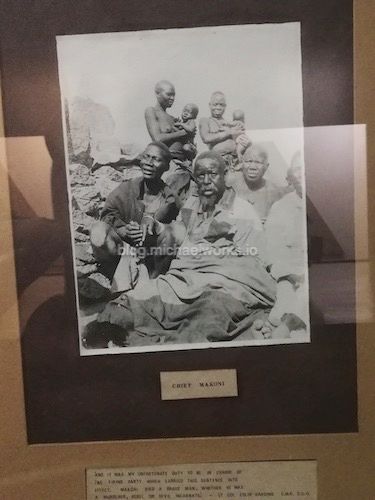
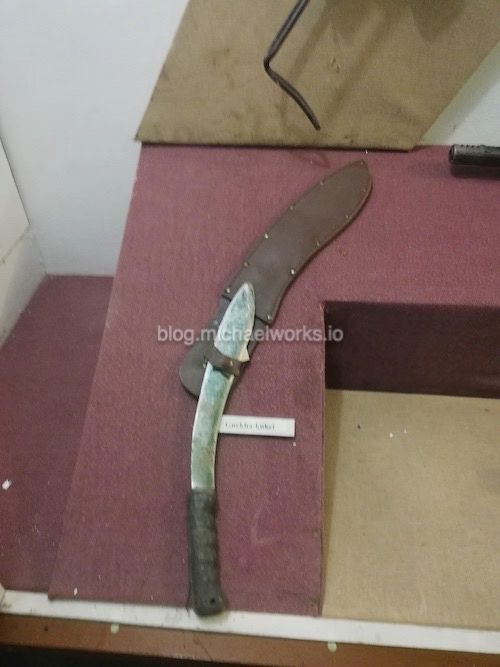
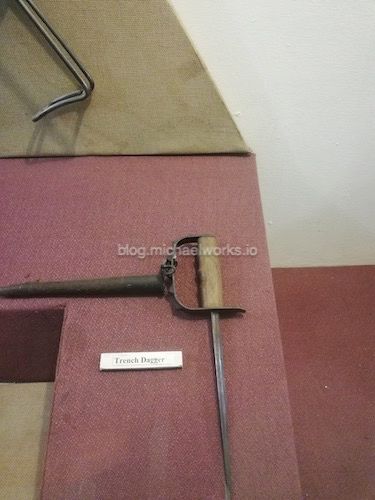
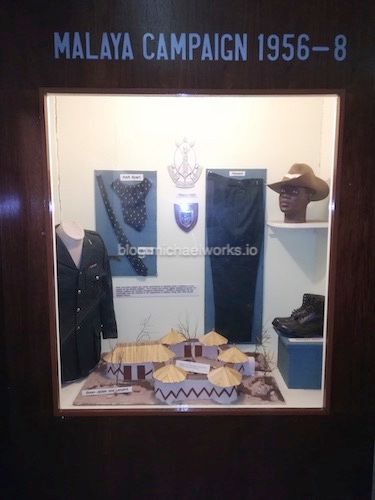
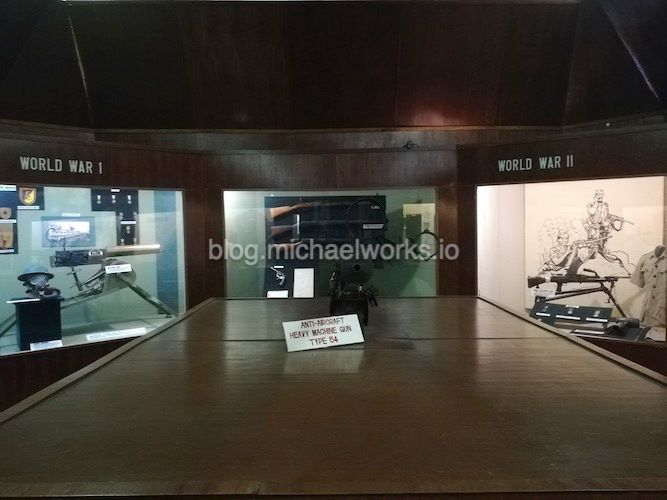
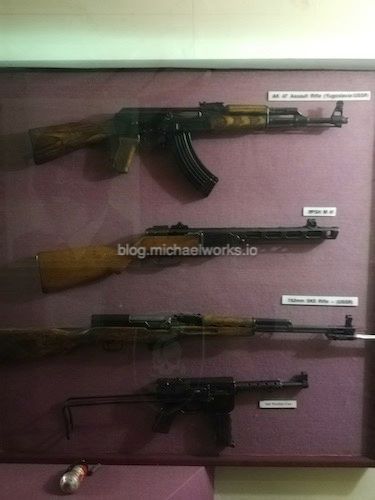
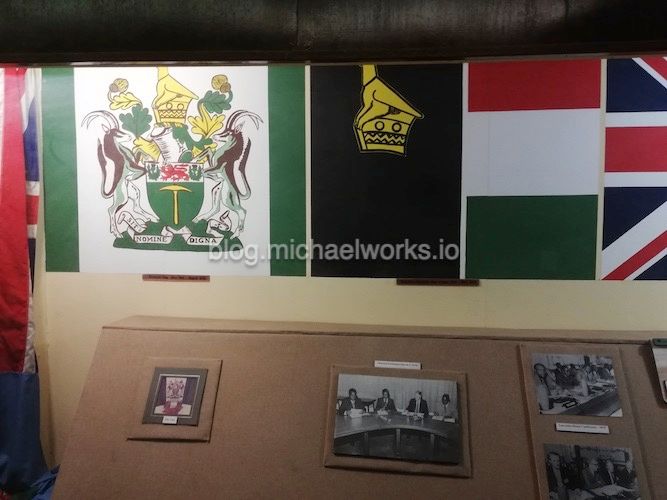
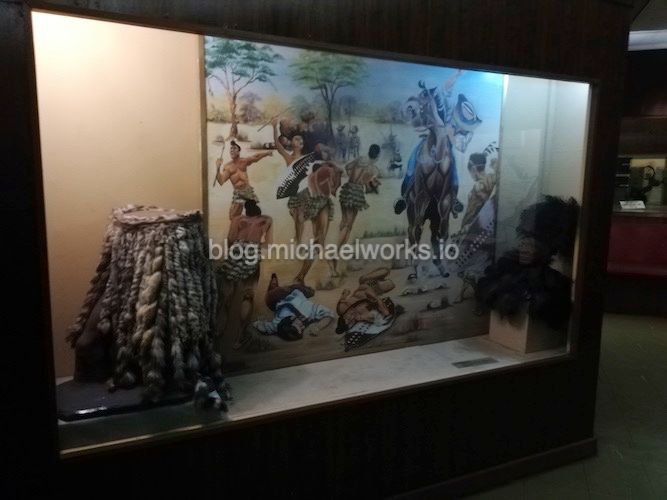
GALLERY 2
The 2nd gallery is outside the main building and features vehicles from different eras and conflicts. Many of those are vehicles that were used in commonwealth countries for anti-riot and COIN operations. Theres a Staghound, Eland 90 (Panhard), Marmon herrington armoured car, Willies Jeep etc. Some of the vehicles were allegedly donated by the then Gwelo School of Infantry, with some having interesting origins.. Many of them also appear to be in need of better care to slow down the visible onset of rusting and general deterioration.
Most interesting artifact
Shell of a Leopard mine protected vehicle. It belongs to the group of multiple ingenuous anti ambush/mine/security vehicles developed and used during the 2nd Chimurenga (the vehicle was crafted to roll on mine detonation, deflecting the blast with the V shaped reinforced hull).
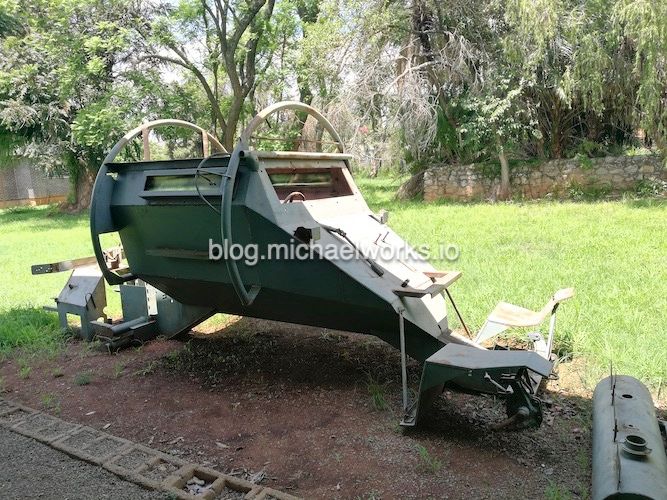
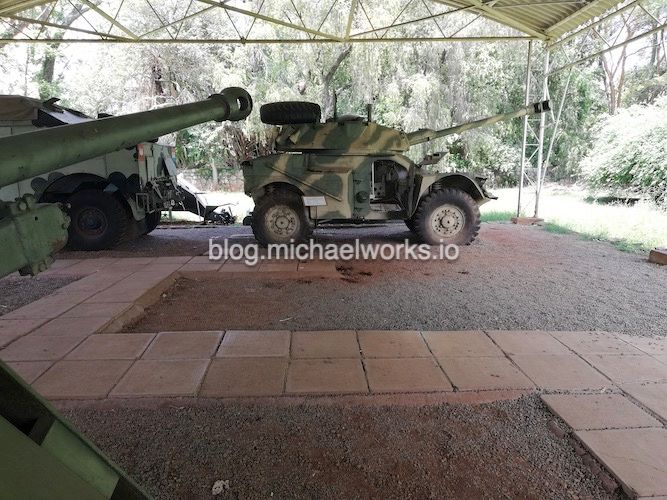
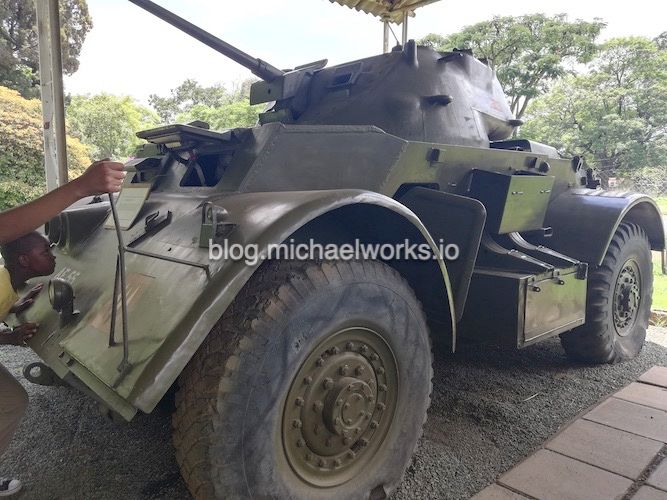
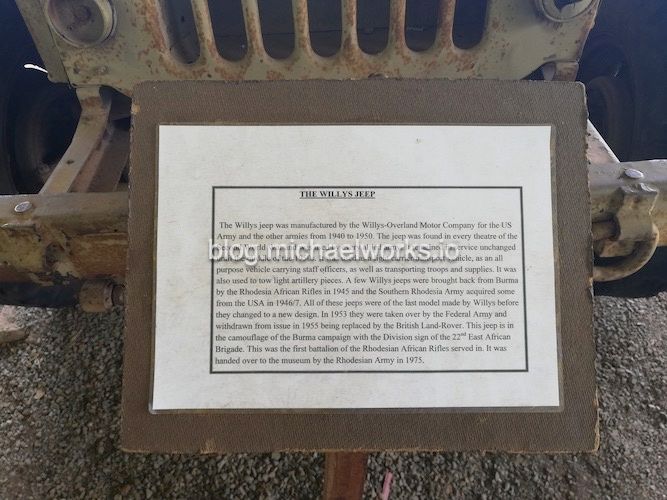
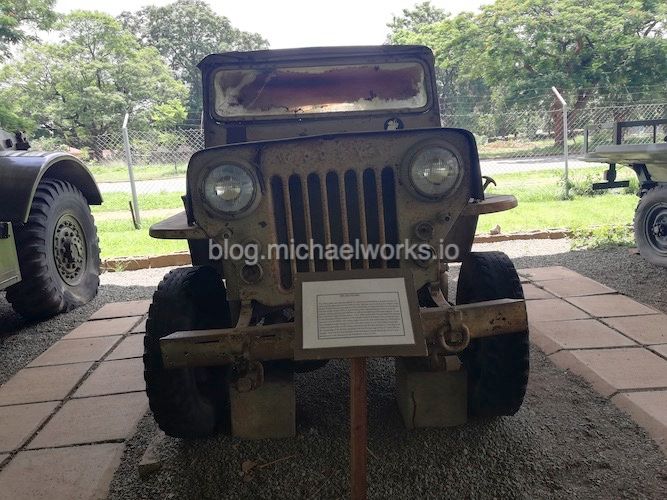
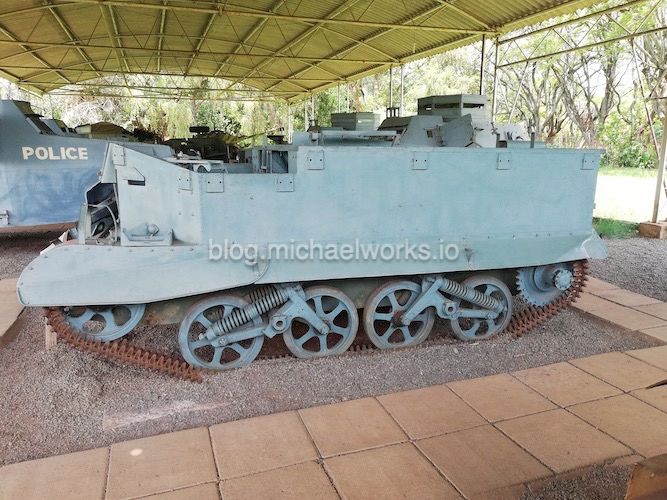
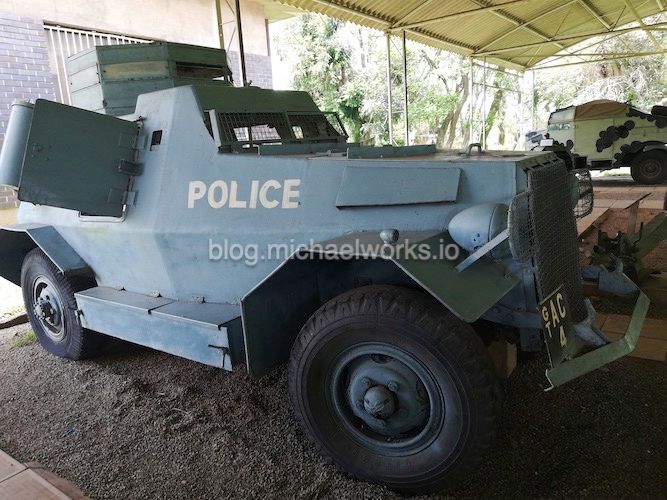
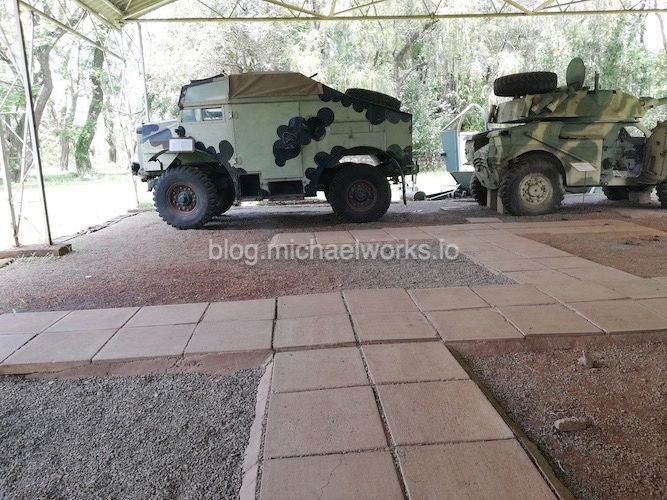
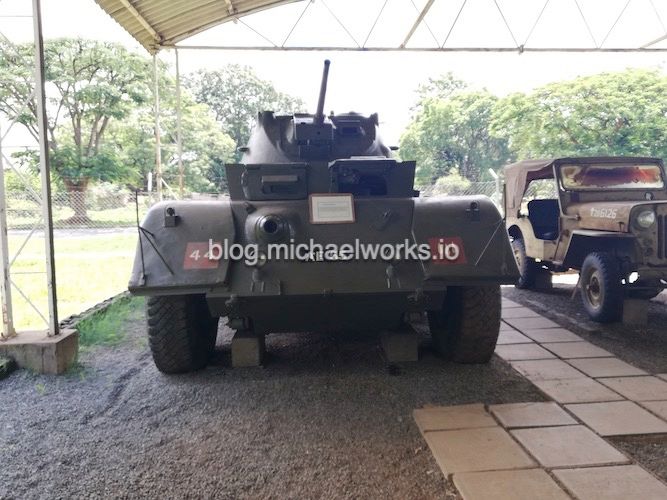
GALLERY 3
This slightly bizarre room documents the history of Zimbabwe's police force, from it's early days as a company owned police unit, British South Africa Police to later on in the colonial era and finally post independence. Numerous artifacts relating to the police’s history, from uniforms worn by the personnel attached to the Pioneer column, the all black ‘volunteers’ from the colonial era known as the ‘Blackwatch’ and equipment used by police specialist units from past and present day.
Most interesting artifact?
This is one of the least interesting galleries, there was/is nothing of too much significance in there.
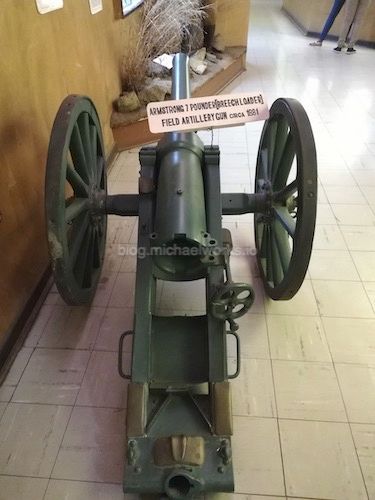
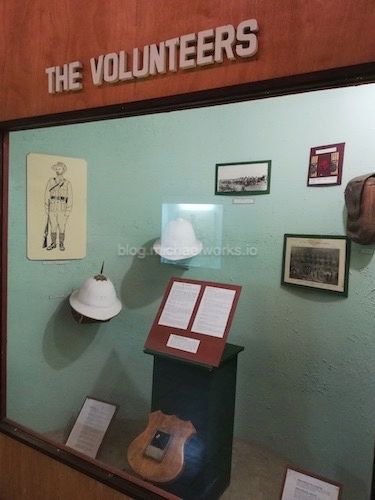
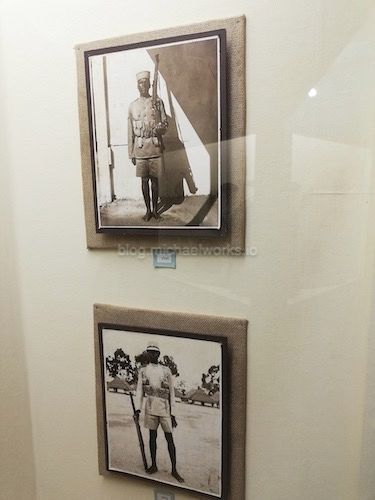
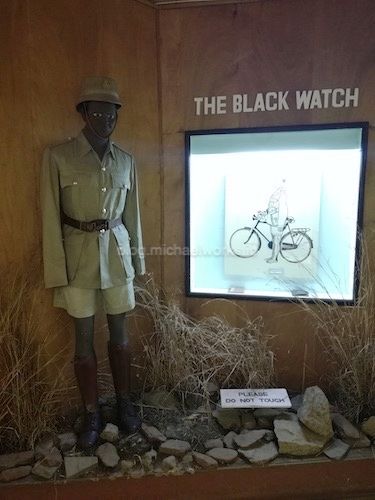
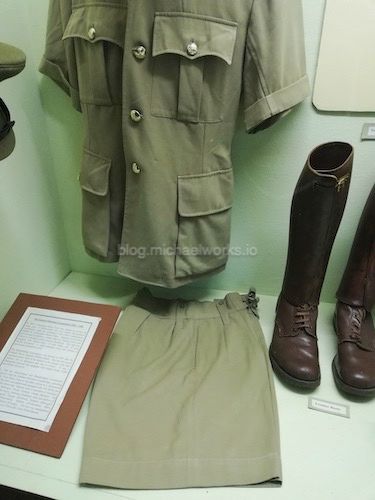
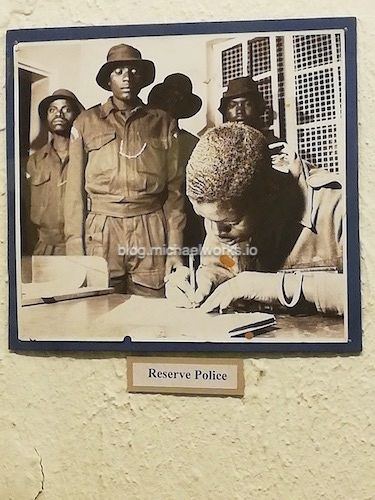
GALLERY 4
Gallery 4 contains artifacts detailing the history of aviation in Zimbabwe. Since it is indoors, many of the artifacts are miniature models. There is a bigger hangar style gallery containing bigger specimens. Nonetheless, the pictures and model planes in gallery four provide one with an overview of the early days of aviation in Zimbabwe. The room also contains a sample ejection seat with a partially deployed parachute.
Most interesting artifact?
WW1 and WW2 era posters showing how to identify Axis aircraft. Why is this intriguing? it shows the ‘empire’ was prepared of a scenario where the Axis would dominate the skies over their colonies, so they had to get their population ready for that "eventuality".
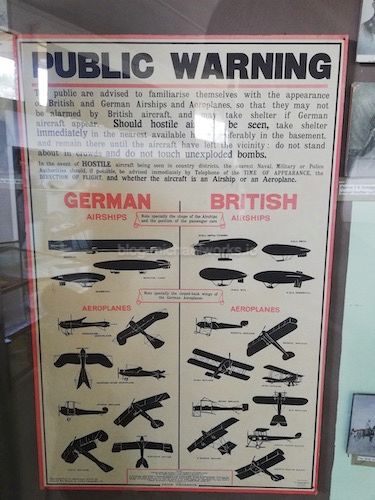
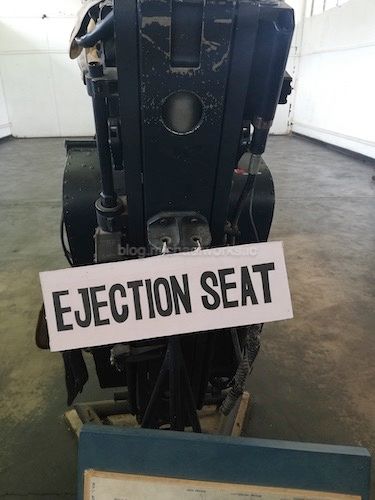
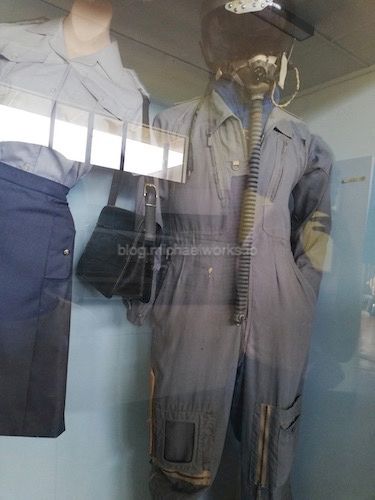
GALLERY 5
At the outbreak of the 2nd World War, Britain needed many combat air crews and fast. Plans were hatched up resulting in the establishment of an Empire Air Training Scheme (EATS). The EATS were a set of flight training schools in the commonwealth tasked with producing pilots, navigators, bombardiers for the Royal Airforce. White volunteers were recruited from all over the empire...
Gweru housed one such school at Guinea Fowl. It started as an Elementary Flying and Training Scheme (EFTS) school and later operated as a standard High School until it was closed around 1977-78 . Memorabilia from this era was donated to the Military museum after the school's closure and can be viewed in Gallery 5. (Guinea Fowl was reopened as a school in 1997)
Most interesting artifact
Definitely the flight log books belonging to some of the students who went on to fly in Europe and North Africa
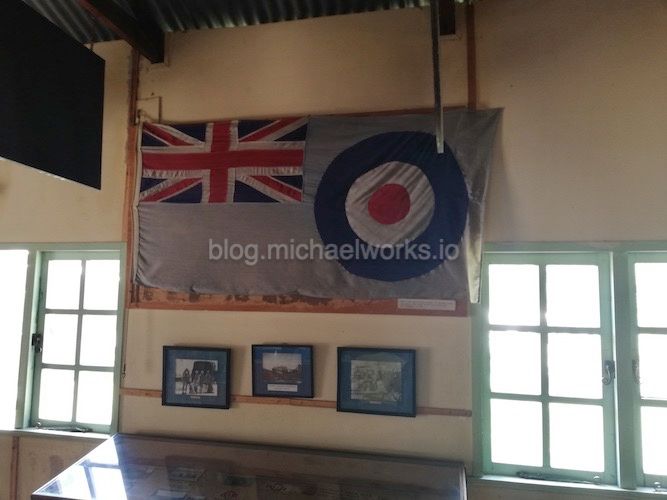
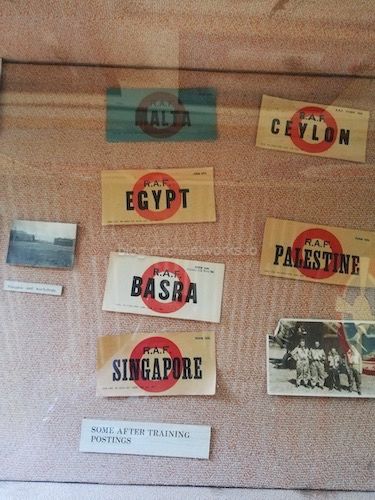
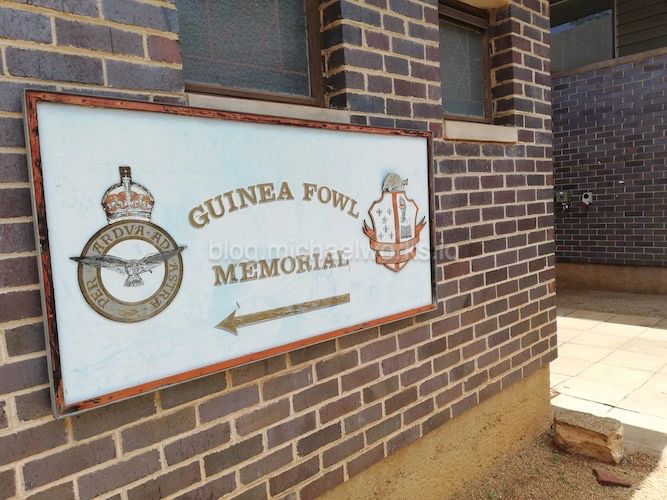
GALLERY 6
This is a field gun and artillery section. It contains several artillery pieces from the 1st world war until the 2nd Chimurenga. There is not much to see but many of the pieces appear to be in great condition with others being more than a hundred years old. A few of the pieces are actual items captured from the Axis powers in North Africa during the 1st world war.
Most interesting artifact?
There are 2 pieces that stand out:
- The “Garden Boy”, a makeshift electronic muzzle loader developed during the 2nd chimurenga to serve as protection in ‘keeps’. It fired a tonne of shrapnel in the general direction it was aimed towards.
- A Dummy 25 pounder. This was a non functional 25 pounder designed to give the impression that a position was protected against would be attackers. It was used in the 60s -70s as a deterrent against guerillas infiltrating from Zambia/Mozambique
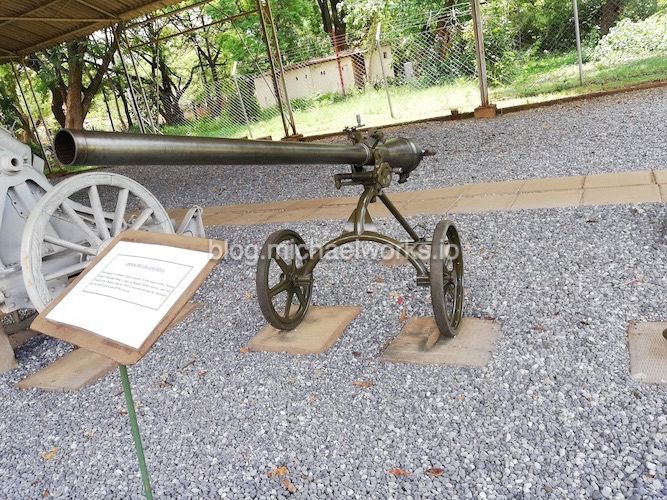
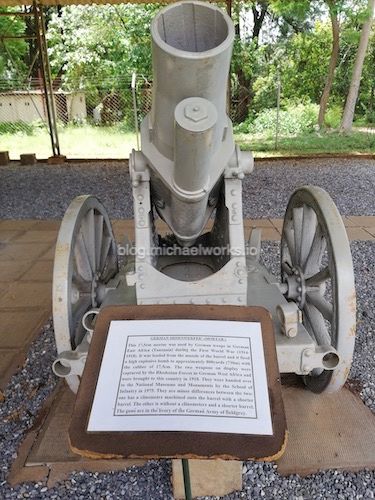
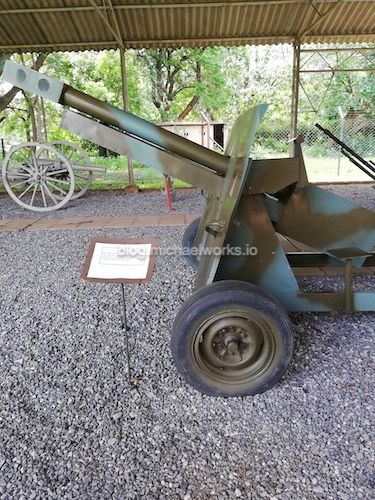
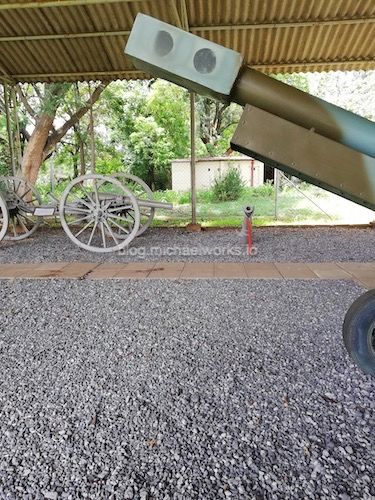
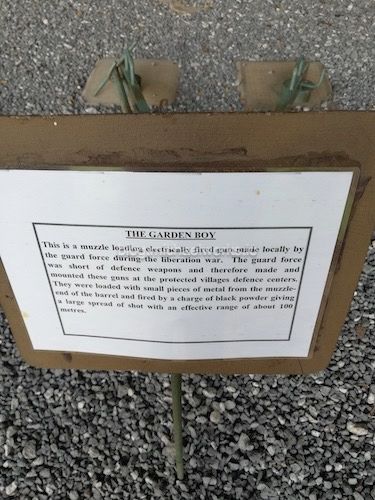
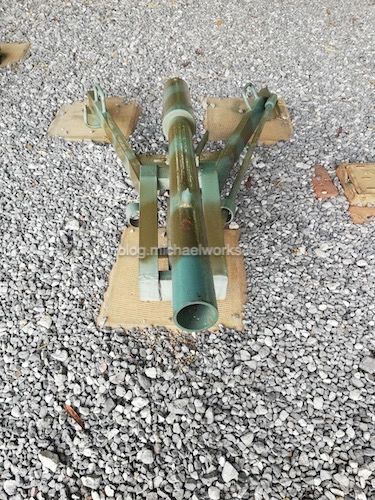
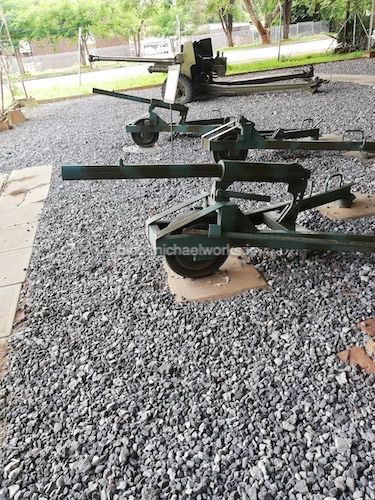
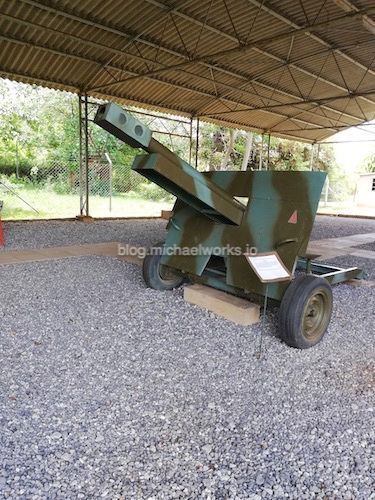
GALLERY 7
The final gallery is a mid-sized aircraft hangar, it is by far the most impressive gallery and for good reason. It houses airplanes from different periods, On the outside is a Vickers Viscount passenger turboprop, while the inside contains DeHavillad vampires (a 2 seater trainer and a single seater multi-role jet), Hawker Hunters, a Provost, Mk. 22 Spitfire as well as an English Electric Canberra.
The Mk. 22 Spitfire on display is a rare specimen. Only 287 Mk 22 Spitfres were ever made and not many of them still exist in the world (the wikipedia entry indicates theres only 2 DOCUMENTED Mk. 22 remaining in the world, one in Australia and the other one in Zimbabwe). There is a whole history about how the Mk. 22's got to be in Zimbabwe, as well as how just after independence, Zimbabwe had the only airworthy Mk. 22 actually flying in the world. It sadly crashed, at Goromonzi in 1982, destroying it and killing the Pilot John Malloch.
Most interesting artifact?
- The spitfire obviously!
- One of the Hawker hunters that were destroyed during the sabotage attack on Thornhill in 1982, it is still in the condition as it was after the attack, charred and scorched.
- Canberra - I know its not the biggest bomber around but the size leaves you in awe.
